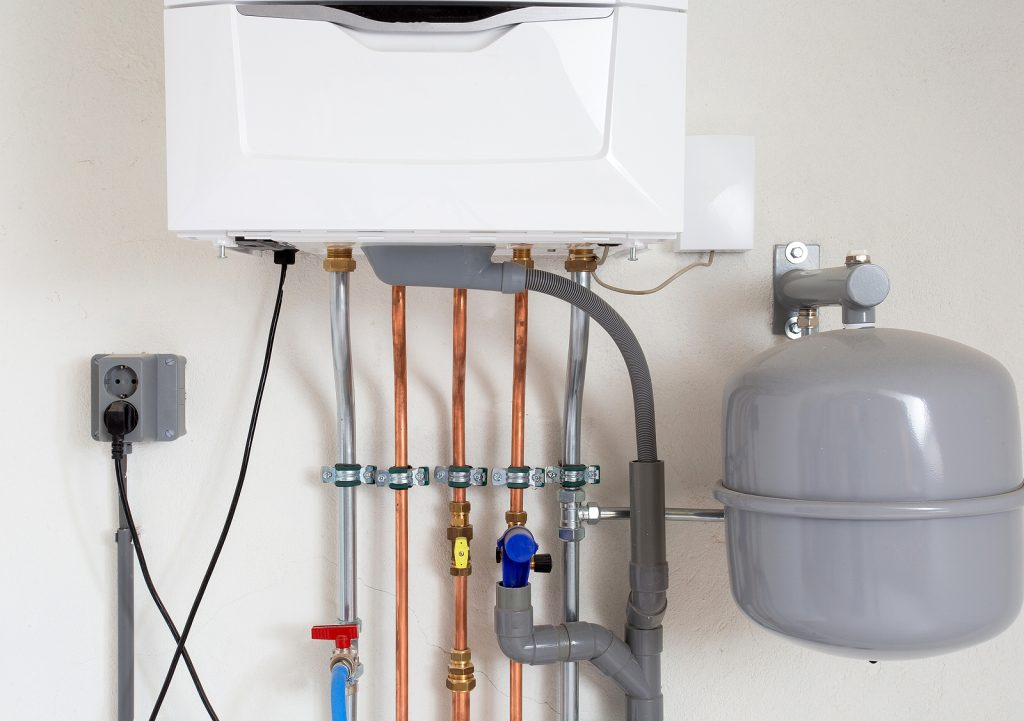7 Home Heating System Types
There are several options for heating your home, and the type you choose is largely dependent upon what type of system is already in use at your house. The type of heating you use is important because it affects the overall efficiency and effectiveness of your home’s comfort system. When evaluating each option, keep in mind that some may work better with certain parts of your home than others. Let’s look at the seven different types of home heating systems.

1. Boiler (Radiator distribution system)
The boiler provides heat to the home through hot water or steam. The most common type of boiler is actually a furnace, but there are some stand-alone boilers available. Many houses use what is called a radiator distribution system, which means that the boiler heats water for the radiators. Radiators are typically located in each room of your house and this allows them to provide even heating throughout your living spaces. If you need to replace your radiators, you may want to consider replacing them with larger ones (150-200% capacity). This can increase your comfort level while reducing energy usage because it releases excess heat rather than allowing it to go unused.
2. Furnace (forced air distribution system)
The furnace is the most commonly used type of heat, and it provides heat to your home using hot air. Usually, this system uses one or more electric motors to draw in the fresh air and fan it over a gas burner or electric heating element. The hot air heats up fast so these systems can be problematic if you don’t have enough ventilation because they lower the humidity level within your house. This means that you should never install a furnace without also installing adequate ventilation to compensate for its use. If installed properly, furnaces are efficient at distributing the heated air throughout your house.
3. Radiant Heating
Radiant heating is actually a more efficient form of forced hot air because it heats objects, not the air. A radiant heating system works by running water or electrical wires through the tubing. The tubing is installed on the underside of your floors for electric systems and behind your walls for water systems (hydronic). Because of this, radiant heating offers you the ability to heat only specific areas within your house. This type of system can be very cost-effective when used correctly since it doesn’t raise humidity levels as standard furnace systems do.
4. Heat Pump
Heat pumps are very similar to air conditioners because they run on electric motors, but instead of cooling hot air, they heat your home using cold air. These types of systems actually take advantage of the differences between hot and cold air in much the same way that an air conditioner does. The system can be either reversible (used in both heating and cooling modes) or non-reversible (heating or cooling only). If you use a heat pump for your home’s heating system, keep in mind that it doesn’t work if the outside temperature is too low. Generally speaking, since heat pumps don’t work when it is very cold outside, these units are most efficient when used during mild winter climates.
5. Ductless Mini-Splits
Ductless systems are typically used when you have a single room that is always comfortable when it’s being heated or cooled. The reason that they’re so popular in this situation is that they offer a solution for individuals who lack adequate insulation and don’t want to spend the money on full-size central heating and cooling appliances. These systems work by sending hot or cold water through a tubing system within the walls of your house. They have both outdoor and indoor units, which means that no ductwork is required throughout your house.
6. Hybrid Heating Systems
Hybrid heating systems are relatively new but they have been gaining in popularity because of their efficiency. This type of system works by taking advantage of both a traditional furnace and either radiant or hydronic heat. In this way, it doesn’t matter what the outside temperature is because your home’s furnace will kick on when it needs to and other units will take care of the rest.
7. Baseboard Heaters
A baseboard heater is similar to a radiant heating system because it too only heats the objects in your home, not the air. The only difference between this type of heating appliance and radiant heating is that instead of using electricity or hot water, these units take advantage of steam or hot water that has been pumped into pipes by a boiler. If you have an older home that doesn’t use forced air for its heating system, you may want to consider replacing your radiators with modern baseboard heaters.
How to Extend Lifespan of HVAC System
With annual maintenance, furnaces and air conditioners can last much longer. Lubricating moving parts will extend the life of a system, as well as get filters replaced regularly. If repairs are needed, either do them yourself or hire a professional. Replacing a thermostat every 7 to 10 years is also helpful for keeping a home’s heating and cooling costs low because older models don’t work as efficiently as newer ones do.
Get in touch with our team today!
When it comes to choosing a replacement heating system, there are many options out there. Determining which one is the best for your home depends on a number of factors, including what kind of heating system you currently use, how much money you’re willing to spend, and what’s most comfortable in your home. Our team of experts is always here to assist you and find the best solution for your needs. Get in touch with our team today at 540-373-5876 and make an appointment. You’ll be glad you did!

